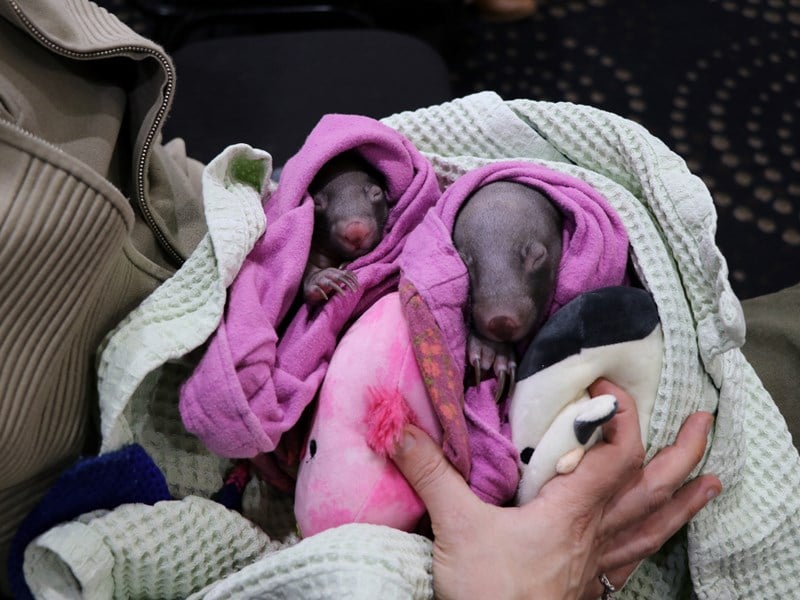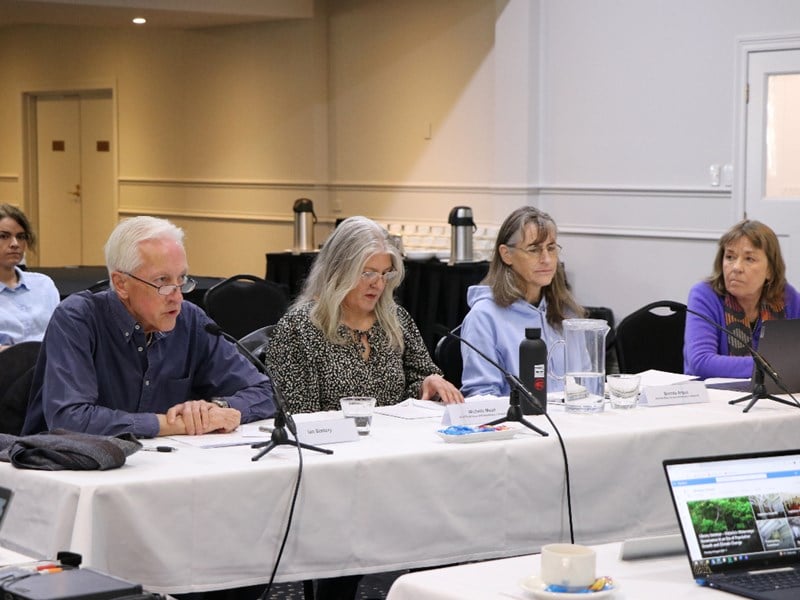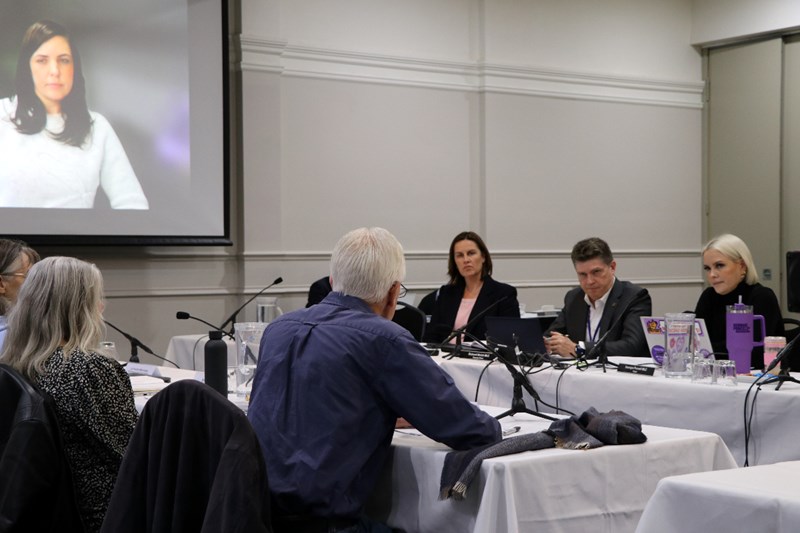- Home /
- News /
- Environment
Rescued animals highlight the cost of roadstrike
21 August 2025

Five-month-old wombat joeys caught the attention of parliamentarians and members of the public at a hearing in Bendigo for the inquiry into wildlife roadstrike.
Orphaned by a vehicle collision, the joeys were a reminder of the real-life consequences of wildlife roadstrike in the state.
There was a general consensus in the hearing room that wildlife roadstrike incidents were increasing while the number of rehabilitators was simultaneously decreasing.
Wildlife rescuer Ian Slattery has more than 20 years of experience in the sector, and he said the financial burden was wiping out the volunteer base.
‘We do it as volunteers, but it's a bit hard to expect us to keep bearing the costs of doing this work financially. I've seen a lot of rescuers who simply can't afford to keep going, and so we're losing a lot of good rescuers because they don't have the support,’ he said.

Currently volunteers in the sector absorb all the costs associated with wildlife rescue, including fuel and car costs to attend rescues, medicine and equipment to treat and euthanise injured wildlife, and the purchasing of milk and supplies to care for orphaned animals.
At the hearing, wildlife rescuers told the Legislative Council Economy and Infrastructure Committee this can equate to thousands of dollars every year.
On top of the financial burden, volunteers noted the physical, mental and emotional challenge of meeting the demands of wildlife roadstrike.
‘As a rescuer, we probably have to euthanise nine out of the ten animals that we are called out to, and that can take its toll,’ Mr Slattery said.
However, it is the love of wildlife that inspires them to keep going year after year.
‘The people who are doing these roles are usually very passionate and caring people,’ Wildlife Rescue Information Network (WRIN) volunteer Jo Fischer said.
Key themes of the hearing were the need for more support measures for wildlife rescue volunteers, a greater focus on public education, more accurate data collection and sharing, a change of attitude towards wildlife and better infrastructure planning with wildlife in mind.
‘The way we share information at the moment is incredibly fragmented,’ Ms Fischer said.
‘We need different levels of government and organisations, such as wildlife rescue groups and insurance companies or anybody who's involved in some way, to start working together when it comes to data sharing.
‘We're not painting a whole picture of what's happening. And so overall, we don't have an understanding across Victoria of what's actually happening to our wildlife.'
Representatives from WRIN said they were inspired to partake in the inquiry for the possibility of change.
‘Instead of just picking up the pieces, we can actually start to address some of the primary problems contributing to wildlife roadstrike and hopefully be part of the change in attitude towards wildlife,’ Ms Fischer said.
‘And this starts with educating the public and trying to change public perception.’

Mr Slattery said we need to have an attitudinal change towards our wildlife.
‘We currently consider wildlife to be a bit of a nuisance,’ he said.
‘We have adopted this approach that when something becomes a perceived inconvenience to us, as a human race, we need to get rid of it.
‘We need to change our attitude to learn how to coexist harmoniously and peacefully with wildlife, and that obligation is something on us.’
The Committee was presented with a number of creative solutions to reduce wildlife roadstrike that are having success in other Australian states and overseas.
RSPCA Victoria Policy and Advocacy Manager Mhairi Roberts said there was a need to have better preventatives when considering development and building roads, as well as better mitigation strategies for animals as well.
‘We need to be thinking about building things like over and under passes, having dynamic signage and doing some public education so that people know when the high-risk times are for wildlife when they’re driving and also so they know what to do when they hit an animal,’ she said.
WRIN volunteer Michelle Mead said she was eager to find ways to actually normalise living with our wildlife.
‘To me, it [the inquiry] was such a great opportunity to actually look at these creative solutions that some of these really clever people are looking into,’ she said.
‘I just believe there's a whole opportunity for a whole new industry where we can actually focus on living with our wildlife, and that's really exciting, and that's something I'm looking forward to.’
For more information visit the inquiry website.